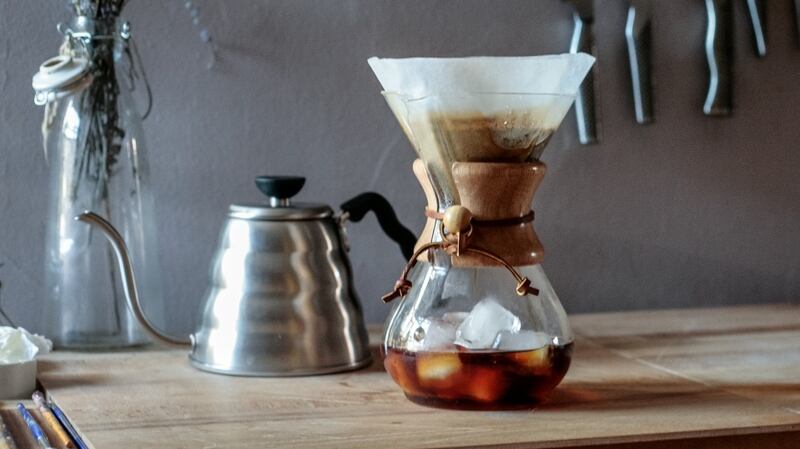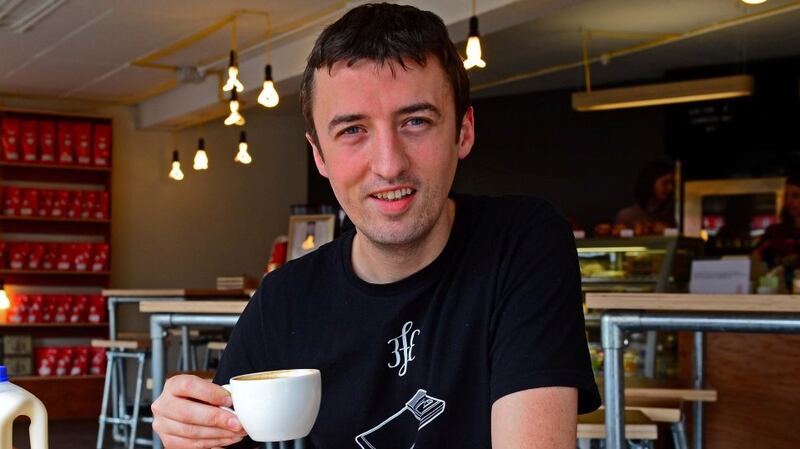Remember when most coffee was made with a spoonful of something very instant, probably resembling a substance that thickened the Sunday gravy? In the last 10 to 15 years, coffee drinkers' expectations have grown and while instant may still be prevalent, most want something more from their coffee experience, especially at home.
Coffee machines now adorn many an Irish countertop and the ubiquitousness of the machine is mostly thanks to the emergence of home espresso machines like Lavazza's A Modo Mia, says Colin Harmon of 3fe coffee and he credits it with getting people into drinking coffee at home.
Things have moved on exponentially since then, with roasting houses emerging all over Ireland since the start of the century. Now it seems like everyone is importing coffee and there is almost a glut of coffee houses in Dublin.
With that, people want to learn more about it and are taking on as a hobby the process of brewing good coffee.
“A big part of our business is encouraging people to brew at home, which seems counterintuitive for a coffee shop,” says Harmon.
“But you can buy a bag of some of the best coffee in the world for around €12. There’s a big culture in Ireland around recreational tasting now and people see it more as experimental tasting as opposed to a jolt of caffeine. It’s similar to how you buy wine.”
With some of 3fe’s coffee machines costing anywhere from €1,000 to €22,000, it’s an expensive hobby to have, but Harmon says it needn’t be.
The correct paraphernalia for a novice need only be an Aeropress, a simple device for brewing coffee and a nice bag of beans, costing maybe €40, he says.
Ger O’Donohoe, owner of barista training company, First Draft Coffee, agrees that people starting out need not break the bank and he’s a big fan of traditional brewing, which is relatively inexpensive.
“Chemex came out in the fifties and it’s a beautiful item to have around the house. It’s a shaped glass carafe that you brew directly in to, like a filter method. As old as these methods might be they seem to spark the imagination of the professional end of things as well. In the past 10 years, they have become really popular."
“With espresso machines, you are going to get very different characteristics from a coffee. It’s very difficult to achieve really good results for espresso from home. You would have to invest in a much better grinder. Filter-style coffee is much easier to achieve at home and it’s a much better way of getting to the nuances of the coffee. Espresso can be very intense whereas filter is much gentler.”
Harmon explains the need for a good grinder when making espresso. “If you buy an excellent espresso machine but then buy a crappy grinder, then the espresso machine is almost useless. It’s like buying a Ferrari and putting wooden wheels on it. We get people to buy the most expensive grinder they can afford and then see what’s left in the budget for the brewer.”
Coffee bar manager at Fallon and Byrne, Aneta Stopyra says, “When it comes to brewing we are big fans of the Aeropress because the slow brewing really brings out the flavour profile of the beans. It’s also easier to control the strength of your coffee as well as being easy to clean.
“The beauty of making really great coffee at home is that you’re in control. You can customise everything from the size of the granule to the temperature of the water so that it’s personalised to your taste. It might sound nerdy but, if you know what you like, write down the recipe and have a weighing scales handy to keep your coffee measurements exact.”
In terms of the best coffee, Stopyra says, “beans-wise at the moment, we’re particularly excited by the single origin La Parcelita from Colombia, roasted by The Barn from Berlin. We are also loving our current Fallon & Byrne house blend, with beans from Bolivia, Brazil and Sulawesi, which we use at the coffee bar as well as selling in the food hall.”
Harmon says, “At this time of year the Kenyan coffees are great, they’re really juicy and fruity and they remind me of the Beaujolais Nouveau. After a while I’ll be craving the Bolivian coffee and waiting for December to roll around. It’s good to rotate as the seasons come around. If I had to pick one country for beans it would be El Salvador, as the variety and scope of what they do there is incredible.”
Great machines for the perfect brew

Chemex: an elegant, one-piece, hourglass shaped vessel made of high quality, heat resistant glass, retailing around €60. Available from 3fe
Aeropress: a versatile and easy to use brewing device that travels well and coffee experts agree on this as a good entry-level product. €35 Available from 3fe
Lavazza A Modo Mia machines: with 120 years of Italian history behind them it's no surprise that Lavazza are experts in the home espresso market. Available at Brown Thomas
Nuova Simonelli Oscar II Espresso Machine: For those who want to blow the budget, this espresso machine looks slick and costs €1,050. Available from 3fe
Irish Barista Championship winner Colin Harmon tells us how to make the perfect cup of coffee at home

Make sure your coffee beans are as close to harvest as possible. Next, get freshly roasted beans, within four to five weeks of roasting and keep them well sealed and the oxygen away from them. Then it needs to be freshly ground: good grinders are expensive so if you don’t have the budget to buy a grinder you should get the shop where you buy the beans to grind it for you in small amounts and use it as close to when you grind it as possible. It’s very important to use fresh water and that it is freshly boiled. If you boil a kettle over and over again the water de-oxygenates and it kills the flavours in coffee. Lastly, make sure it is freshly brewed and drink straight away. Focus on those five things and you’re sure to produce the perfect cup of coffee.
Brought to you by Jacobs. New Caffé Di Milano Italian wafer biscuits are in stores now – the perfect accompaniment to your daily coffee












